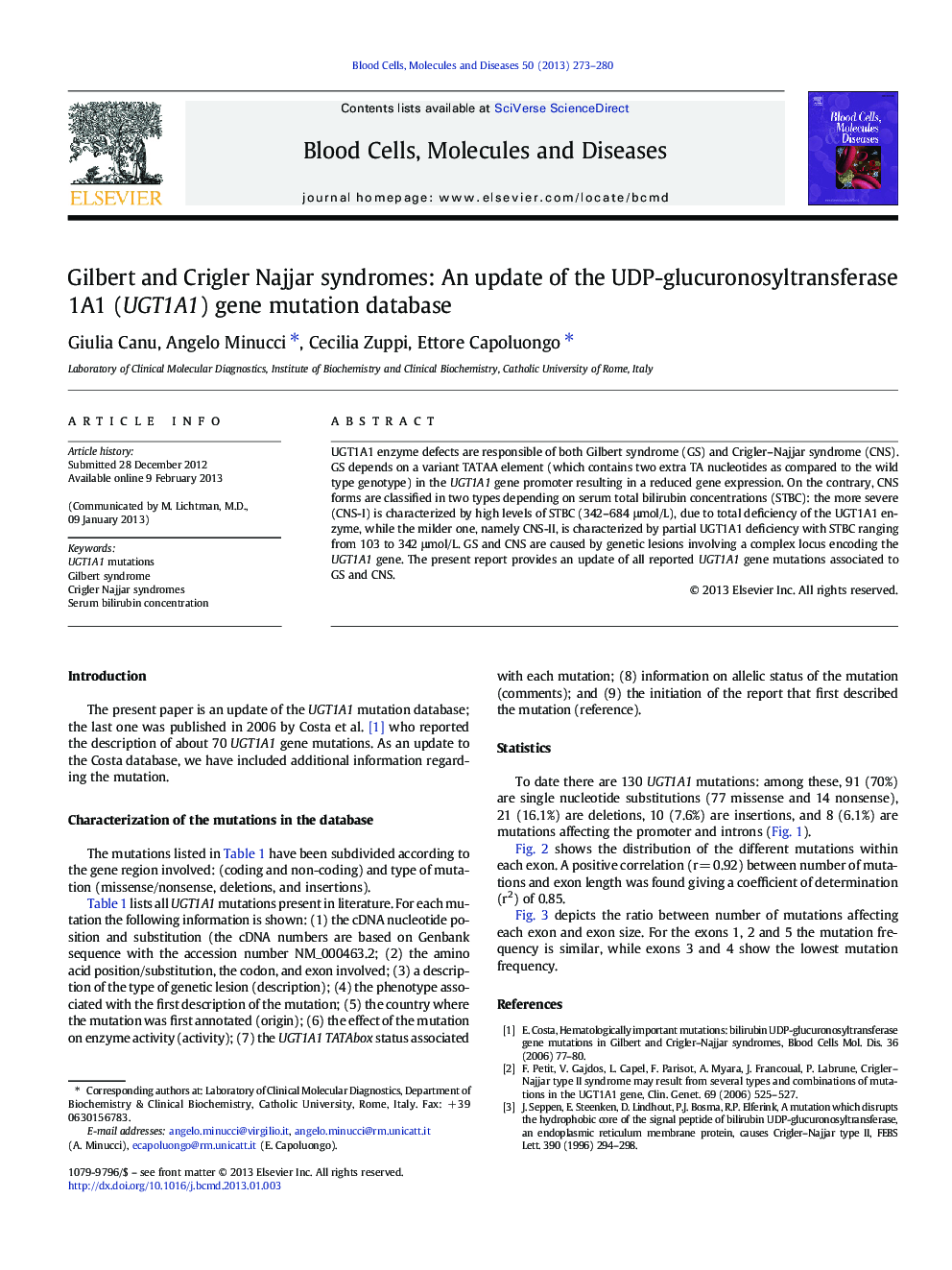| Article ID | Journal | Published Year | Pages | File Type |
|---|---|---|---|---|
| 2827306 | Blood Cells, Molecules, and Diseases | 2013 | 8 Pages |
UGT1A1 enzyme defects are responsible of both Gilbert syndrome (GS) and Crigler–Najjar syndrome (CNS). GS depends on a variant TATAA element (which contains two extra TA nucleotides as compared to the wild type genotype) in the UGT1A1 gene promoter resulting in a reduced gene expression. On the contrary, CNS forms are classified in two types depending on serum total bilirubin concentrations (STBC): the more severe (CNS-I) is characterized by high levels of STBC (342–684 μmol/L), due to total deficiency of the UGT1A1 enzyme, while the milder one, namely CNS-II, is characterized by partial UGT1A1 deficiency with STBC ranging from 103 to 342 μmol/L. GS and CNS are caused by genetic lesions involving a complex locus encoding the UGT1A1 gene. The present report provides an update of all reported UGT1A1 gene mutations associated to GS and CNS.
